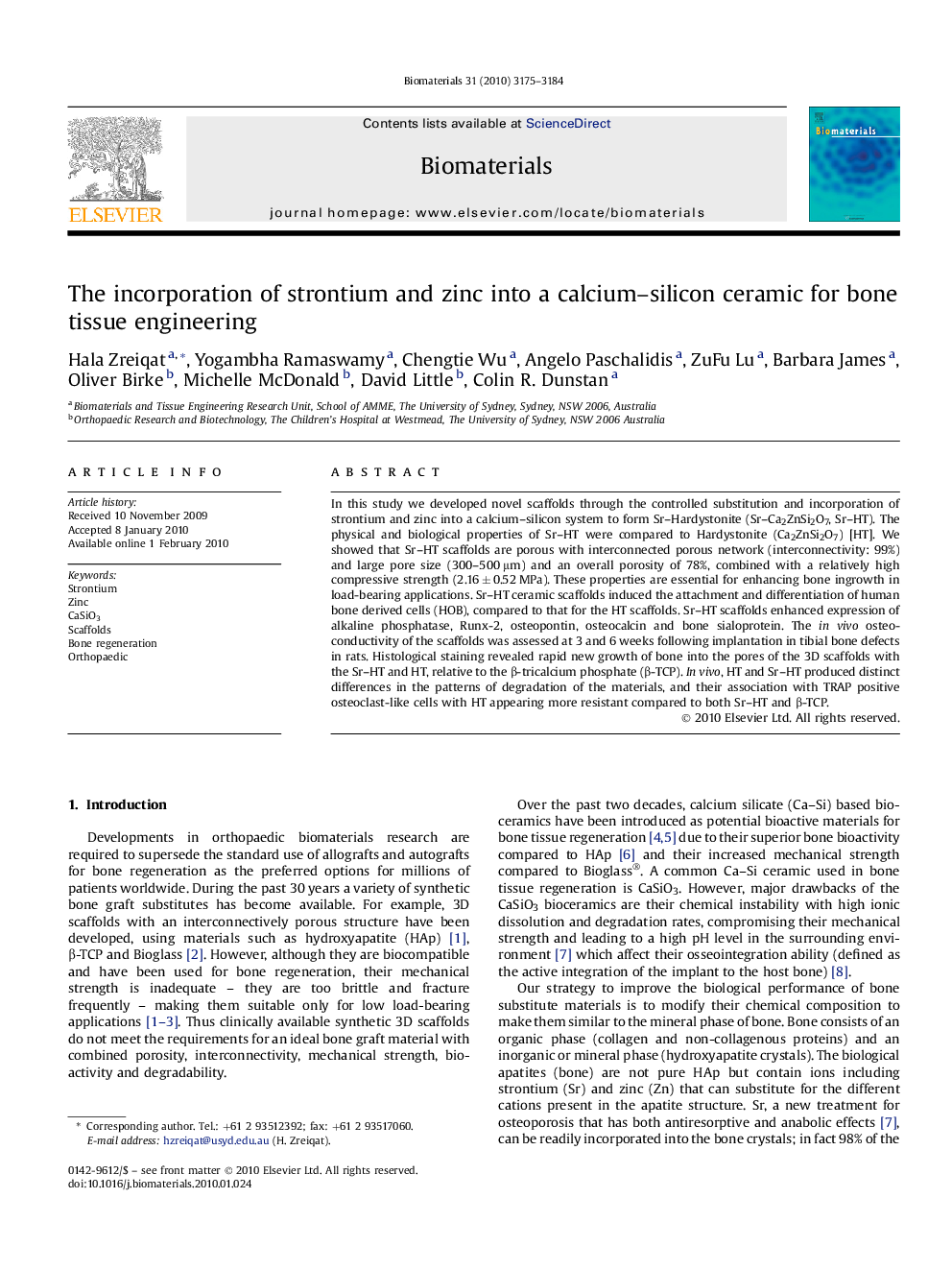| کد مقاله | کد نشریه | سال انتشار | مقاله انگلیسی | نسخه تمام متن |
|---|---|---|---|---|
| 8122 | 578 | 2010 | 10 صفحه PDF | دانلود رایگان |

In this study we developed novel scaffolds through the controlled substitution and incorporation of strontium and zinc into a calcium–silicon system to form Sr–Hardystonite (Sr–Ca2ZnSi2O7, Sr–HT). The physical and biological properties of Sr–HT were compared to Hardystonite (Ca2ZnSi2O7) [HT]. We showed that Sr–HT scaffolds are porous with interconnected porous network (interconnectivity: 99%) and large pore size (300–500 μm) and an overall porosity of 78%, combined with a relatively high compressive strength (2.16 ± 0.52 MPa). These properties are essential for enhancing bone ingrowth in load-bearing applications. Sr–HT ceramic scaffolds induced the attachment and differentiation of human bone derived cells (HOB), compared to that for the HT scaffolds. Sr–HT scaffolds enhanced expression of alkaline phosphatase, Runx-2, osteopontin, osteocalcin and bone sialoprotein. The in vivo osteoconductivity of the scaffolds was assessed at 3 and 6 weeks following implantation in tibial bone defects in rats. Histological staining revealed rapid new growth of bone into the pores of the 3D scaffolds with the Sr–HT and HT, relative to the β-tricalcium phosphate (β-TCP). In vivo, HT and Sr–HT produced distinct differences in the patterns of degradation of the materials, and their association with TRAP positive osteoclast-like cells with HT appearing more resistant compared to both Sr–HT and β-TCP.
Journal: Biomaterials - Volume 31, Issue 12, April 2010, Pages 3175–3184